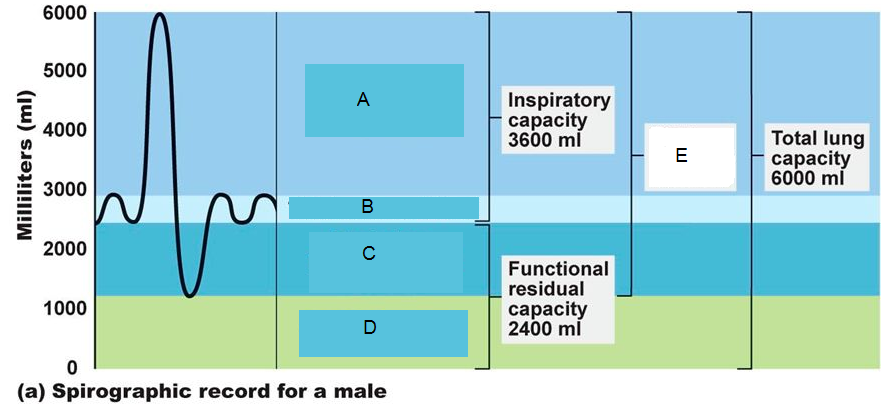A center that moderates the functions of the respiratory rhythm center is located in:
1. Dorsal medulla oblongata
2. Ventral medulla oblongata
3. Pons Varolii
4. Pre-central gyrus of the cerebrum
Premature infants may develop respiratory distress and can land up in respiratory failure sometimes needing an intensive care for such infants. This may be due to:
1. the sudden change from the uterine environment to the air
2. the incomplete development of the lung surface
3. inadequate production of surfactant
4. mutations in the genes involved in lung formation
What keeps the lungs inflated even during expiration?
1. The smooth muscles of the lung
2. The diaphragm and the intercostal muscles alone
3. The visceral pleurae and the changing volume of the lungs
4. Surface tension from pleural fluid and negative pressure in the pleural cavity
Oxygen is mainly transported as oxyhaemoglobin in the blood. Identify the correct statement regarding oxygen transport in blood:
1. During normal activity, a molecule of hemoglobin returning to the lungs carries one molecule of O2
2. During conditions of acidosis, hemoglobin is able to carry oxygen more efficiently.
3. Increased BPG levels in the red blood cells enhance oxygen-carrying capacity.
4. A 50% oxygen saturation level of blood returning to the lungs might indicate an activity level higher than normal.
During normal respiration, the ventral respiratory group located in the medulla oblongata:
1. Establishes the basic respiratory rhythm
2. Controls the switch off point of inspiration
3. Remains inactive
4. Excites chemosensitive zone neurons
Pneumotaxic centre which can moderate the functions of the respiratory rhythm centre is present at:
1. Pons region of brain
2. Thalamus
3. Spinal cord
4. Right cerebral hemisphere
The following statements refer to gas carriage by blood. Choose the correct statement:
| 1. | After leaving the lungs, each litre of blood contains about 20 ml of oxygen. |
| 2. | Haemoglobin is half saturated with oxygen when the PO2 is about 30 mm Hg |
| 3. | As the PCO2 rises, the affinity of haemoglobin for oxygen is increased. |
| 4. | Each litre of arterial blood contains about 50 mL of carbon dioxide. |
Study the spirograph and identify the correctly matched volumes from the codes given:

TV IRV ERV RV VITAL CAPACITY
1. A c B D E
2. A B C D E
3. B A C D E
4. C B A D E
Fibrous connective tissue builds up in the lungs causing them not to inflate properly, and actually deflating them is called:
1. chronic bronchitis
2. emphysema
3. pulmonary fibrosis
4. asthma
The C-shaped cartilaginous rings around the trachea are open posteriorly to:
(1) allow for expansion of the esophagus during swallowing
(2) allow the vocal cords to relax
(3) prevent food from entering the nasal cavity during swallowing
(4) prevent food from entering the trachea






